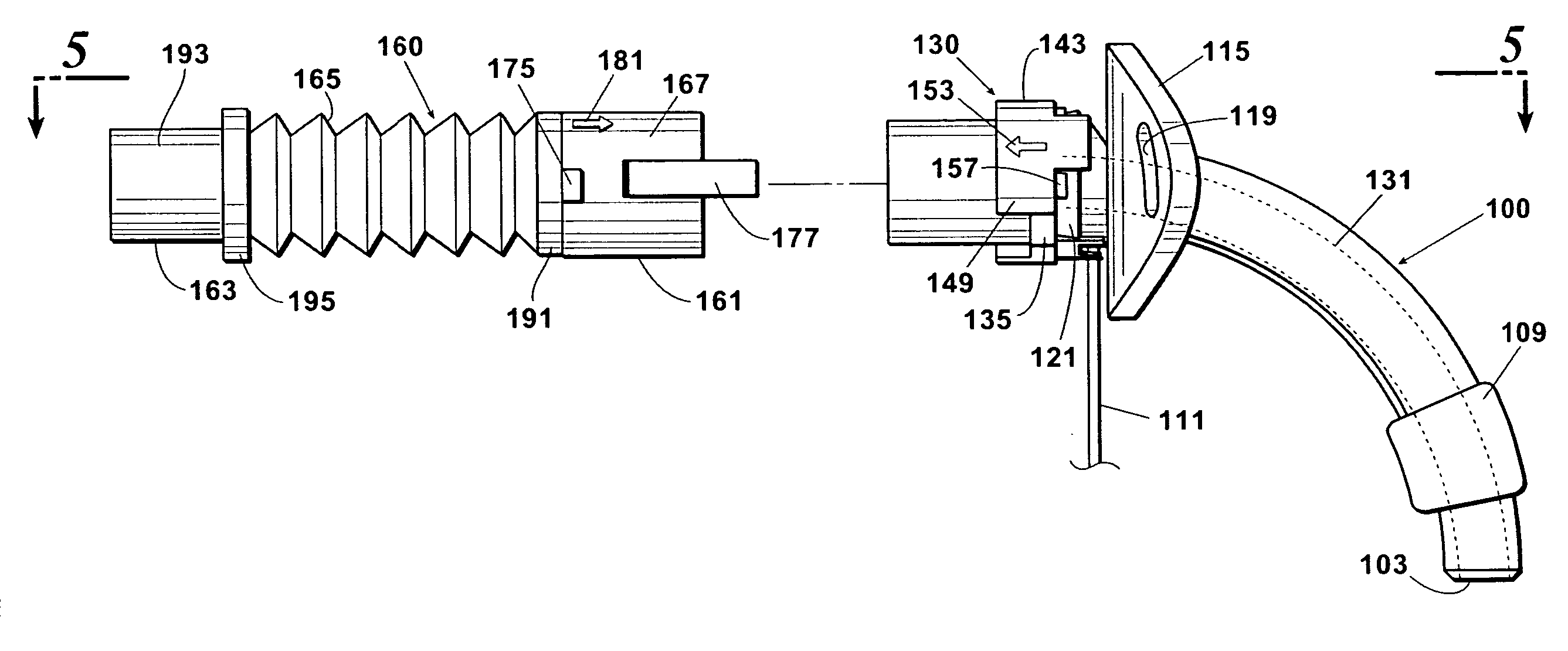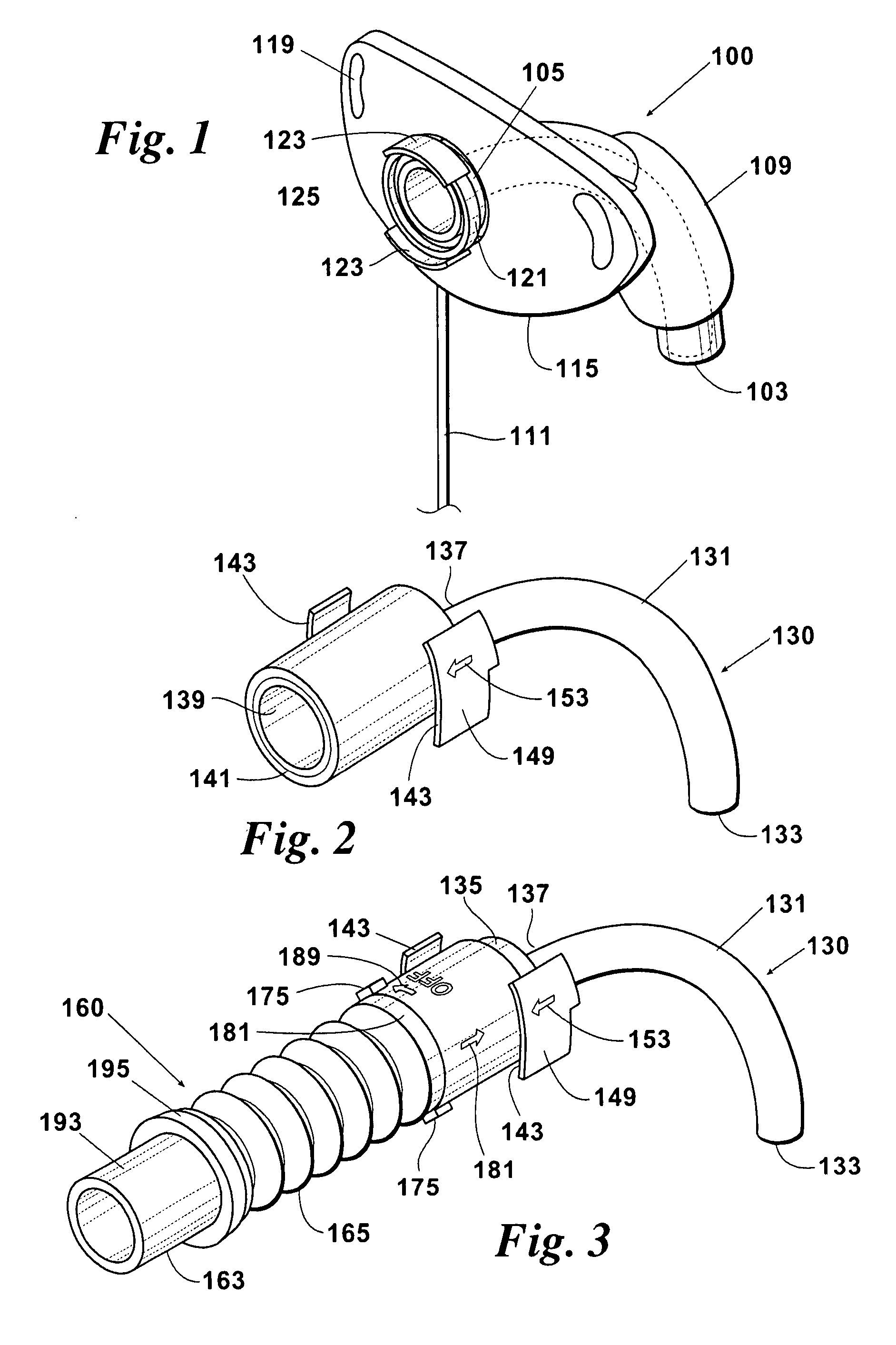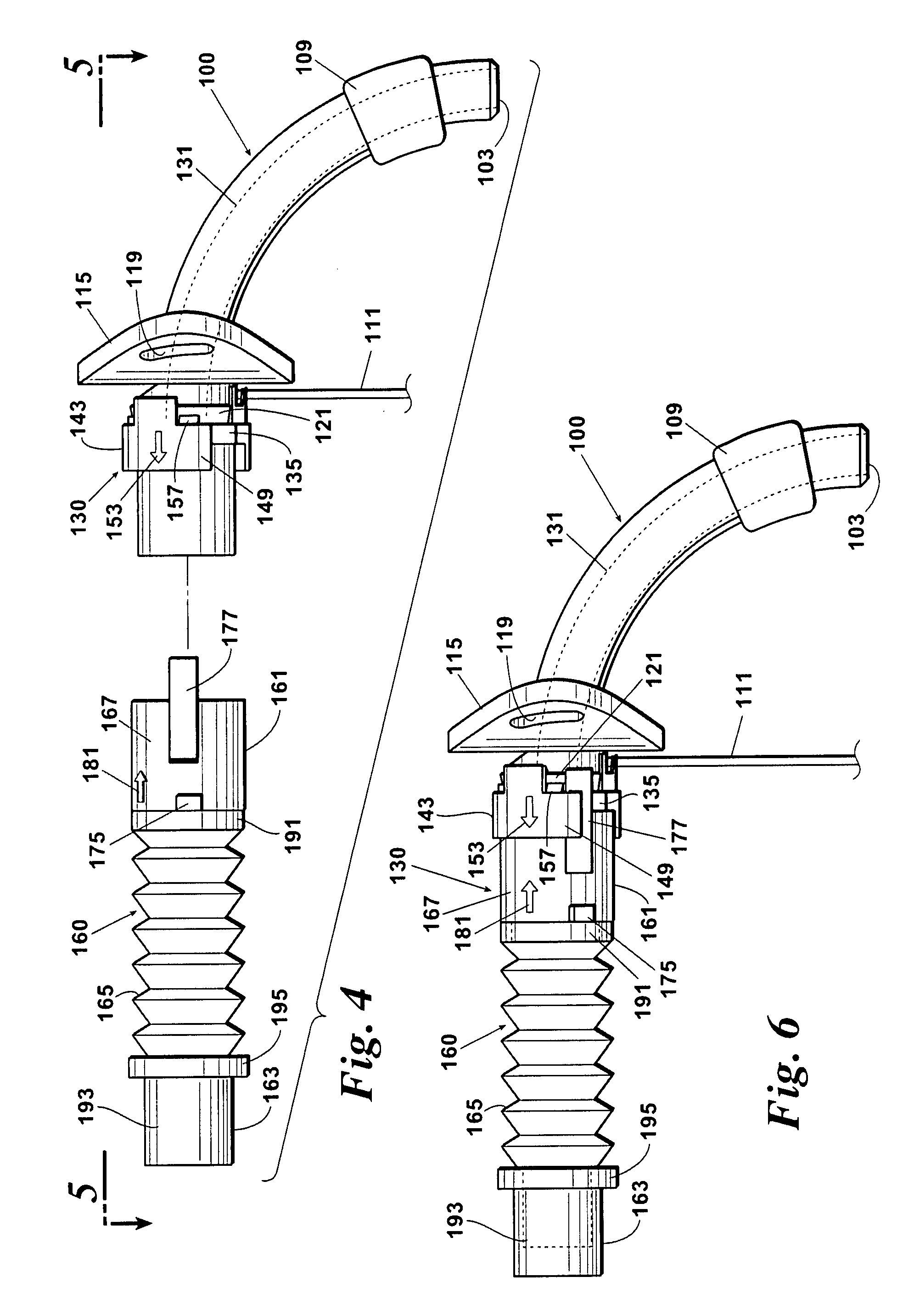Ventilator to tracheotomy tube coupling
a technology of tracheotomy tube and ventilator, which is applied in the field of medical equipment, can solve the problems of increasing the likelihood of infection-causing secretions, less secure, and inherent problems of known one or two-piece tracheotomy tubes
- Summary
- Abstract
- Description
- Claims
- Application Information
AI Technical Summary
Benefits of technology
Problems solved by technology
Method used
Image
Examples
Embodiment Construction
Tracheal Inserts
[0065] Adult tracheotomy tubes are illustrated in FIGS. 1-18, showing a tracheotomy tube with outer and inner cannulas 100 and 130 and a tapered tubular extension 139 on the trailing end of the inner cannula 130 and FIGS. 19-26, showing a tracheotomy tube with outer and inner cannulas 200 and 230 and a tapered tubular extension 223 on the trailing end of the outer cannula 200. A child's tracheotomy tube is illustrated in FIGS. 27-35. A child's tracheotomy tube has only one cannula which, for purposes of explanation of the invention is identified as an outer cannula 300.
[0066] All three known outer cannulas 100, 200 and 300 are, in some respects, substantially similar, being arced tubes 101, 201 or 301 of approximately a quarter circle extending from a leading end 103, 203 or 303 to a collar 105, 205 or 305 at the trailing end 107, 207 or 307 of the arced tube 101, 201 or 301. A cuff 109, 209 or 309 on the leading half of the arced tube 101, 201 or 301 is inflatable...
PUM
 Login to View More
Login to View More Abstract
Description
Claims
Application Information
 Login to View More
Login to View More - R&D
- Intellectual Property
- Life Sciences
- Materials
- Tech Scout
- Unparalleled Data Quality
- Higher Quality Content
- 60% Fewer Hallucinations
Browse by: Latest US Patents, China's latest patents, Technical Efficacy Thesaurus, Application Domain, Technology Topic, Popular Technical Reports.
© 2025 PatSnap. All rights reserved.Legal|Privacy policy|Modern Slavery Act Transparency Statement|Sitemap|About US| Contact US: help@patsnap.com



